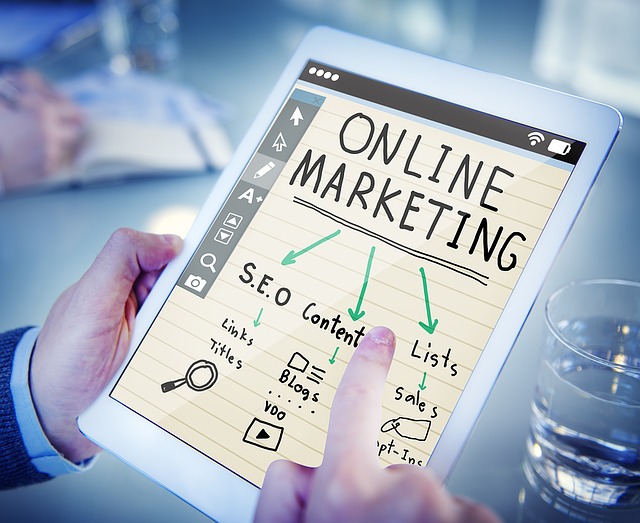If a company wants to sell products or services on the Internet, they often create a website. When we think about such a company, we probably imagine an online store. But what about cases when a business sells goods or services to another business? This is what we call a B2B website.
This article describes the difference between B2B and B2C (Business-to-Consumer) companies and reasons for creating a B2B website. Here, we discuss how to build and promote such a website.
What is a B2B Website
The definition of a B2B website is one where a business services other businesses online. Its main purpose is to offer services, software, content, or other products to companies. For example, the Gravitec.net website is a B2B website. Gravitec.net is a service that enables other companies to send push notifications from their websites. Our website includes a homepage, a pricing page, a blog, and login and sign up forms. We will discuss the key elements of a B2B website in detail below.
Differences Between B2B & C2C and B2C Websites
There are three business models for websites:
- C2C – customer to customer,
- B2C – business to customer,
- B2B – business to business.
The first one works in peer-to-peer platforms when customers offer goods or services to each other. Couchsurfing, the popular website for travelers, is a prime example of a C2C website. A registered user can find a place to stay in a country they wish to visit, or list their flat and make it available to other travelers. There are no business interests in this model.
B2C websites are aimed at selling goods to end customers. These are online stores and retailers. Businesses communicate with customers there. So in contrast to Couchsurfing, a hotel booking system provides hotel rooms for a fee. On one hand, the company posts information about their product, on the other hand, users find the stuff they need. Examples of B2C websites are Netflix, Spotify, Aliexpress.
B2B websites have a more complicated task. They seek to attract businesses to buy their products or services. B2B websites are focused on the gradual leads-to-prospect conversion. Their sales funnel consists of many parts.
Read about customer lifecycle marketing.
TIP
Let’s find out how B2B websites attract clients and what they need in order to do this.
Key Elements of a B2B Website
Before developing a website, a company needs to determine its main tasks. For example, a one-page website might be suitable for a business that only does direct sales. This website might show the main information about a product and give contact information to connect with their sales department. Typically, however, companies use an expanded website structure, with a list of services and their descriptions, pricing, and perhaps even a blog. Wholesale sites are often arranged as online shops.
Let’s focus on the features of B2B websites that provide services. What do you need to build such a website to attract customers?
Step 1 – Traffic generation
Any website needs to be visible to their target audience. This is, of course, true for B2B websites as well. A company needs to plan on how to make their website visible, even before creating any content. There are several options for attracting customers.
- Advertising
- SEO
- Outreach or PR
Advertising is relatively expensive and is only effective as long as your advertising budget lasts. SEO and Outreach, on the other hand, will maintain its effectiveness, even if you reduce your budget. Here are some tactics you can use.
- Before developing a website and creating content, determine a semantic core for your industry. This is a set of keyword phrases that help people find your product through a Google search.
- Use these phrases in your website design.
- Use pages that present your main services as landing pages.
- A blog might actually be the main source of traffic for your website. Blog articles will attract visitors, establish your image as an expert, and provide information to customers.
- News stories and social media comments are important for building customer loyalty, brand awareness, and increasing website traffic. PR campaigns are usually very useful once a website is in operation. Read how to report a story to the local news.
Step 2 – Design, CMS, content
After you develop a strategy for attracting visitors, you are ready to create your website. Once you’ve decided on a structure, it is much easier to define projects for designers, webmasters, and copywriters. Sometimes companies start with a limited website and add to it over time.
When designing a website, focus on usability. Your customers will thank you for respecting their time and providing convenience. In addition, search engines also appreciate website usability.
TIP
Step 3 – Conversion
This stage is perhaps the most problematic. How to convert website visitors into customers?
For lead generation you can set:
- a registration form (by email, phone number, social network profile)
- a subscription form (email, push notifications, social networks)
- call to action buttons
- lead magnets
Typically, visitors gradually move from the first interest in a product (page view) to interaction (subscription), and then make a purchase decision. That is how the sales funnel works. The website generates leads by redirecting all incoming traffic to the landing pages. After a visitor learns about the product, they can subscribe to get news about updates and offers. When they are ready to make a purchase, they register or contact the sales department.
TIP
The simplest way to establish contact with a website visitor is through push notifications. This channel collects subscribers many times faster than other channels (i.e. email). A push notification opt-in box will automatically appear when a visitor views the website. To give permission to receive notifications, the visitor only has to click “Allow”.

Once they give you their permission, you can send push notifications to them, even after they leave your website.
Here are bullet points of creating a B2B website.
- CMS – webmaster
- Design – web designers
- Content (text and media) – content creators
- Search engine optimization – SEO specialist
- Marketing channels – marketers
- Tools for lead generation – sales and marketing
Why Websites are Important for B2B Companies
What does a B2B company get by having a website?
- Visibility
- Expanded customer audience
- Sources for user engagement
- Round-the-clock accessibility
- Opportunity to convert visitors into customers
- Online purchases
When promoting products and services via a website, B2B companies face the challenge of developing an effective instrument for interaction with other businesses – their customers. But this is work worth doing.







